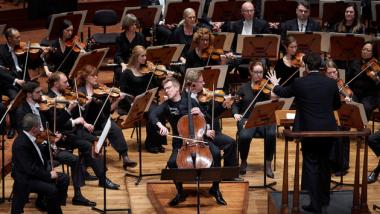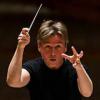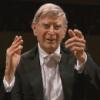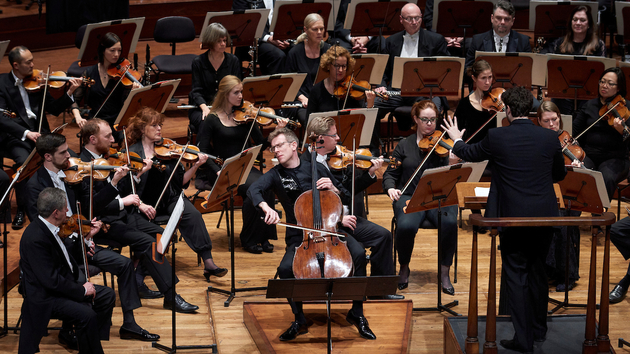
With Andrew Norman late to deliver his cello concerto to Johannes Moser and the San Francisco Symphony, I figured Friday night’s concert would be premiere-less. Wrong: Moser substituted Witold Lutosławski’s concerto, which, though written nearly 50 years ago, hadn’t been performed at Davies until last weekend. Christian Reif (director of the S.F. Symphony Youth Orchestra) conducted.
It’s no mere technicality: this 1970 work feels more current than the majority of new music I hear in the symphony hall. It isn’t a competition, but it is a heartening example (among others, like Kaija Saariaho’s excellent Notes on Light) of the concerto’s continued vitality. Lutosławski doesn’t totally abandon the conventions: rather, he puts them on their heads, acknowledging them, pointing at them in order to make them really heard for the first time.
In lieu of a big tutti, the soloist provides his own introduction. And he doesn’t just play by himself — he plays for himself. Absent from the music is the kind of display integral in a cadenza: there’s only a series of repeated Ds, played with absolute regularity. Each attack, each length, each ring: the same.
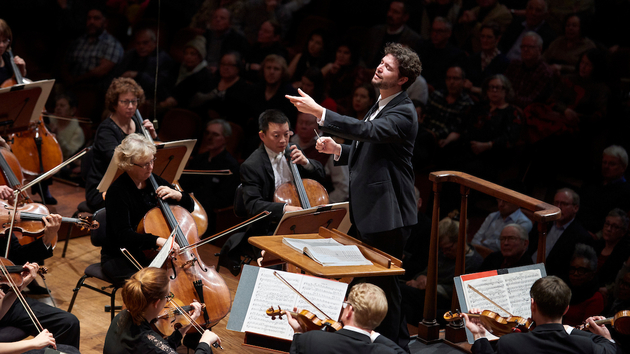
It’s like sitting in the practice room, trying to execute to perfection a fundamental exercise — until boredom sets in. Then, as if improvising, the cellist creates a fast-paced dialogue via a host of techniques (including a wonderfully brisk hocket of harmonics and stopped notes). Every time he pulls himself back to the work — in a kind of play on the ritornello, or return, of the Italian baroque concertos — the control is short-lived.
Indeed, if the traditional concerto sets up the binary of the individual versus the orchestral masses, this movement is about the individual versus his own distractions — a struggle relevant to today’s screen-time world.
And when the orchestra does get involved, the soloist often loses. A few minutes into the work, the brass sections erupts in a gloriously deafening smatter of sounds. They might be an unwanted intrusion, but still, they get the glory: the cellist can only sputter a few notes in response.
Leading up to the concert, I’d been listening to Moser’s own recording of the work — but seeing him perform it live was a whole other experience. His technique was superb, and he was exceptionally tuned in to the sections of the orchestra, but more than that, Moser (who lives in Germany) used his body in a way that amplified the work’s conflict. The whole performance was theatrical, the audience occasionally laughing not out of nervousness, but because some of it really was funny.
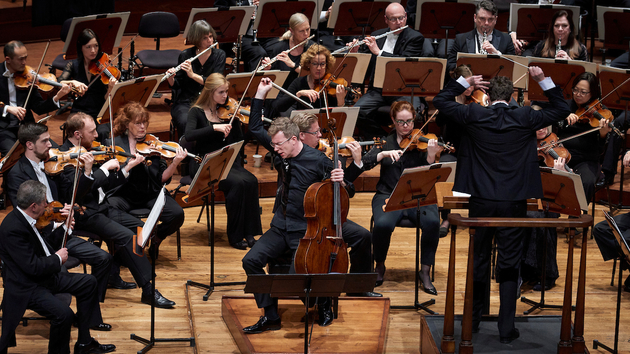
In the ensuing episodes, Lutosławski uses the orchestra in increasingly colorful ways. Under the soloist’s lyricism, the strings become like pulsars, distant yet distinct. A loping unison ushers in the finale, a frenzied and virtuosic concerto for orchestra — like the first movement in its display of ideas but made greater by so many musicians. When the force coalesces in shuddering glissandi, the effect is of being forced to squeeze through a small space.
The soloist’s plight is often comically futile. After the orchestra plays thunderous and complicated music, the cellist’s reply sounds impossibly small. And when his initial strikes return, they’re augmented a hundred times by the orchestra. His own material overtakes him.
There’s a similar dryness, too, in Prokofiev’s Fifth Symphony. Written in 1944, more than a decade after his previous symphony, it was an immediate success: a week after it was first performed in the United States, Prokofiev was the cover star of Time magazine (hard to imagine them featuring a 50-something symphonist today, but I’m still hopeful).
Friday’s performance was also a hit. In the dramatic Adagio, the massively dreary dotted rhythms created a militancy that made the sweet melodies soar even higher. And in the scherzo, the lines dovetailed in a way that felt straight out of the streets of Romeo and Juliet.
There was another fabulous performance in Richard Strauss’s Don Juan, a hell of an overture for this program (and just one week after the massive Also sprach Zarathustra, to boot). Solos by oboist James Button and concertmaster Alexander Barantschik were gorgeous, but the best part was watching the sea of section musicians play their hearts out.

